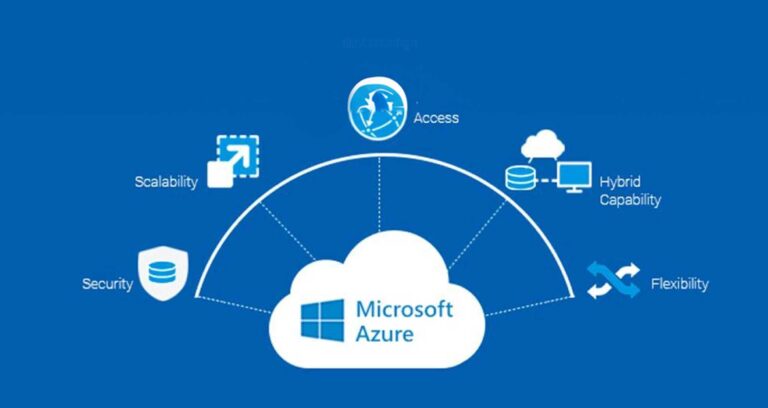
Introduction
Artificial Intelligence (AI) is one of the most transformative trends of the 21st century, fundamentally reshaping how we interact, work, and live. AI refers to technology that enables computers and machines to emulate human learning, comprehension, problem solving, decision making, creativity, and autonomy [1]. It significantly impacts multiple aspects of our daily lives, which are evident in industries like healthcare, education, transportation, entertainment, and even home management.
AI technologies like voice assistants and autonomous vehicles are rapidly becoming ubiquitous in contemporary lifestyles. The global AI market size is valued at USD 196.63 billion in 2023 and is assumed to grow at a CAGR (Compound annual growth rate) of 36.6% from 2024 to 2030, underscoring its extraordinary rate of adoption and development [2]. This essay examines the integration of AI into our daily life, highlighting its benefits, challenges, and transformative potential.
AI in Daily Life
Smart home
AI is revolutionizing modern home living. AI-powered home management has experienced significant growth in recent years due to advancements in AI technologies and increasing consumer demand. A smart home allows residents to control appliances, lighting, thermostats, and other devices remotely via internet-connected systems. Devices like Amazon Alexa, Google Assistant, and Apple Siri offer seamless environmental control through voice commands, adjusting lighting, setting reminders, and managing smart thermostats.
AI-powered appliances, such as smart refrigerators, provide advanced features like tracking groceries or suggesting recipes based on available ingredients. The global smart home market, valued at USD 101.07 billion in 2023, is expected to grow at a CAGR of 22.9% through 2032 [3]. Additionally, AI in home security has advanced remarkably with cameras and alarm systems using facial recognition to distinguish between residents and strangers, increasing home safety and efficiency.
Health and Wellness
AI’s role in healthcare is transformative, which extends from personal wellness to medical advancements. Heart rate, oxygen saturation, and electrocardiogram readings are among the health metrics that are continuously monitored by wearable technology such as the Fitbit and Apple Watch. These gadgets use data analysis to offer tailored health advice, encouraging better sleep and exercise routines. For instance, the Apple Watch features emergency response capabilities, such as automatically contacting emergency services if a user’s pulse is undetected for a specific duration.
The AI healthcare market, valued at USD 14.4 billion in 2023, is expected to grow at a CAGR of 39.2% through 2032 [4]. By evaluating genetic information and medical images, AI also improves medical diagnostics by facilitating early disease detection. For instance, predictive analytics offers promising opportunities for early intervention and better patient outcomes by assisting in the identification of conditions before symptoms appear.
Education
AI is reshaping education by creating personalized learning experiences. The AI in the education market is projected to be valued approximately USD 73.7 billion by 2033 with a dramatic CAGR of 35.10% over the next decade [5]. Platforms like Duolingo and Khan Academy use AI to provide tailored lessons to individual student needs. According to the recent survey from the Digital Education Council, 86% of students use AI in their studies, with 24% engaging with AI tools daily.
AI-powered virtual applications assist students in solving problems, ensuring a better understanding of subjects. For instance, common applications include searching for information, grammar check, summarizing documents, paraphrasing a document, and creating a first draft through tools like ChatGPT and Grammarly [6]. Moreover, AI grading systems are becoming more prevalent in schools and universities, offering more efficient and objective assessments of student performance. AI is also making learning languages easier, as translation tools break down language barriers.
Transportation
Transportation is another sector demonstrating significant AI-driven innovation. Companies like Tesla are already developing self-driving cars capable of navigating, detecting obstacles, and making decisions in real-time using advanced AI algorithms.By 2032, the worldwide AI transportation market is expected to have grown from its 2022 valuation of USD 3 billion to USD 23.11 billion [7]. AI is also making public transportation more efficient with applications like Waze and Google Maps, which help optimize routes and reduce traffic congestion by analyzing real-time data. Drones, like those from Amazon, are beginning to play a significant role in deliveries, crucially altering how goods are transported and delivered.
Entertainment and Creativity
AI is revolutionizing entertainment by personalizing. Platforms like Spotify and Netflix use AI algorithms to recommend music and shows based on individual preferences and viewing habits. AI is also contributing to artistic creativity, with tools like OpenAI’s MuseNet and DeepArt generating artworks and music compositions. In gaming, AI is enhancing player experiences with dynamic storytelling and virtual reality (VR) integration, providing more immersive and interactive gameplay. The AI media and entertainment market, valued at USD 15.11 billion in 2023, is projected to grow to USD 121.99 billion by 2032, reflecting the rapid adoption of AI-driven creativity and innovation [8].
Benefits of AI
AI improves inclusivity, efficiency, and convenience in a variety of fields. It functions as a virtual assistant by organizing schedules, sending out reminders, and making daily chores easier. Chatbots and other AI-driven customer support provide immediate solutions, increasing customer satisfaction. With 54% of students reporting greater course interest when AI is incorporated into learning experiences, AI tools in education promote greater student engagement and productivity [9]. Adoption of AI has also reduced costs in a variety of industries; 4% of businesses have seen savings of 20% or more [10]. AI-powered diagnostic tools in healthcare eliminate the need for costly procedures, and smart home systems optimize electricity, heating, and cooling to save energy.
Not only enhancing cost and time efficiency, AI is improving accessibility for individuals with disabilities. AI tools such as speech-to-text software help those with hearing impairments and real-time translation and speaking tools enable people to communicate even with speech impairments or language barriers. The impact of AI on inclusivity is immense, fostering a more connected and convenient society. Economically, by 2030, AI in the global economy market value is estimated to reach USD 4.9 trillion with a cumulative USD 19.9 trillion, which demonstrates its remarkable impact on the economy [11].
Concerns
AI presents serious issues despite its benefits, especially with regard to data security and privacy. Secure mechanisms are necessary to prevent abuse of the vast amounts of personal data that AI systems collect, ranging from shopping habits to health metrics. Excessive automation poses the risk of diminishing human abilities, as over-reliance on AI tools can undermine critical thinking and creativity. Adoption of AI is made more difficult by ethical issues, such as bias in AI decision-making and a lack of accountability for mistakes. To ensure AI’s responsible and constructive integration into society, its capabilities must be balanced with human oversight.
Conclusion
Undoubtedly, artificial intelligence (AI) is a transformative force that is improving efficiency, personalization, and inclusivity in a variety of industries in modern days, including healthcare, education, and entertainment. Its effects are crucially transforming current industries and anticipated to be even more influencing the economy in the future, encouraging innovation, and propelling economic growth. But as AI develops further, it will be crucial to address issues with ethics, privacy, and societal ramifications. AI has the potential to create unprecedented opportunities, paving the way for a more creative, effective, and inclusive future for all people.
Reference
[1] IBM. (2024, August 9). Artificial Intelligence. Ibm.com. https://www.ibm.com/topics/artificial-intelligence
[2] Artificial Intelligence Market Size, Share, Growth Report 2030. (2023). Grandviewresearch.com. https://www.grandviewresearch.com/industry-analysis/artificial-intelligence-ai-market
[3] Smart Home Market Size, Value & Trends | Growth Report [2032]. (2024). Fortunebusinessinsights.com. https://www.fortunebusinessinsights.com/industry-reports/smart-home-market-101900
[4] Faizullabhoy, M., & Wani, G. (2024, June 24). Artificial Intelligence in Healthcare Market – By Offering (Software {Machine Learning, NLP, Computer Vision}, Service), Application (Medical Imaging & Diagnosis, Drug Discovery, Hospital Workflow, Therapy Planning, Wearable) – Global Forecast (2024 – 2032). Global Market Insights Inc. https://www.gminsights.com/industry-analysis/healthcare-artificial-intelligence-market
[5] Tajammul Pangarkar. (2024, March 27). AI in Education Market To Hit USD 73.7 Billion by 2033. Market.us Scoop. https://scoop.market.us/ai-in-education-market-news/#:~:text=The%20AI%20in%20Education%20market,35.10%25%20during%20the%20forecast%20period.
[6] Survey: 86% of Students Already Use AI in Their Studies — Campus Technology. (2024). Campus Technology. https://campustechnology.com/articles/2024/08/28/survey-86-of-students-already-use-ai-in-their-studies.aspx
[7] Precedence Research. (2023, September). Artificial Intelligence in Transportation Market Size, Report 2032. Precedenceresearch.com; Precedence Research . https://www.precedenceresearch.com/artificial-intelligence-in-transportation-market#:~:text=in%20transportation%20market%3F-,The%20global%20artificial%20intelligence%20(AI)%20in%20transportation%20market%20size%20was,USD%2023.11%20billion%20by%202032.
[8] Straits Research. (2023). Ai In Media And Entertainment Market Share, Growth, Forecast to 2032. Straitsresearch.com. https://straitsresearch.com/report/ai-in-media-and-entertainment-market#:~:text=Market%20Overview,26.12%25%20from%202024%20to%202032.
[9] AI in Education: 2025 Statistics & the Future of Learning. (2024, July 24). Artsmart.ai. https://artsmart.ai/blog/ai-in-education-statistics-2025/#:~:text=54%25%20of%20students%20ae%20more,part%20of%20the%20learning%20experience.&text=Studies%20indicate%20that%2054%25%20of,positive%20impact%20on%20student%20involvement.
[10] Anastasiya Zharovskikh. (2024, May 21). AI in Business: Enhancing Efficiency and Reducing Costs. InData Labs. https://indatalabs.com/blog/ai-cost-reduction#:~:text=Around%204%25%20of%20all%20companies,confirming%20AI’s%20cost%2Dsaving%20potential.
[11] Fried, I. (2024, September 17). AI will add $19.9 trillion to global economy by 2030, IDC predicts. Axios. https://www.axios.com/2024/09/17/ai-global-economy-idc-2030
Write and Win: Participate in Creative writing Contest & International Essay Contest and win fabulous prizes.


